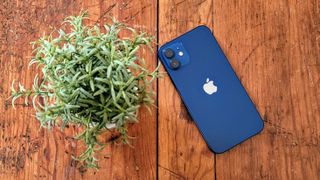iPhone 12 and iPhone 12 Pro teardown — what does the extra $200 get you?
The middle children of the iPhone 12 lineup are almost twins

Based on the specs Apple provided, it seemed like the iPhone 12 and the iPhone 12 Pro were extremely similar devices with the telephoto camera and LiDAR sensor as the primary reasons for the $200 price difference.
Well, now that the phones are generally available, the folks at iFixit got a chance to pop them open and prove that you are getting a little more than that when you pay up for the iPhone 12 Pro (via Mashable).
- iPhone 12 vs. iPhone 12 Pro: Which new Apple phone is best?
- Best smartphones in 2020
- The best Black Friday deals: Predictions and early sales to expect
Apple was open about the display panels used on the iPhone 12 and iPhone 12 Pro, and that all of the iPhone 12 models would feature OLED Super Retina XDR screens this year, an upgrade from the LCD used in the standard iPhone 11 last year. In the case of the iPhone 12 and iPhone 12 Pro, the screens are indistinguishable as both are 6.1 inches. You do, however, get one upgrade because the iPhone 12 Pro is brighter (569 nits to 742 nits in our testing).
One somewhat surprising case of feature parity between these two devices is the battery size. Both smartphones include a 2,815mAh battery, smaller than that of both the iPhone 11 (3,110mAh) and the iPhone 11 Pro (3,046mAh). The belief was that the efficiency of Apple's new A14 Bionic chipset would compensate for this, but iPhone 12 battery life results so far haven't supported this.
At 10.78 Wh, the iPhone 12 and 12 Pro use the exact same battery—in fact, they share a lot of other components too: https://t.co/mexR7iuDBH pic.twitter.com/FiiUBNEop6October 24, 2020
Speaking of the A14 Bionic that powered both of these smartphones, the only difference between the two is 6GB of RAM on the iPhone 12 Pro and 4GB in the iPhone 12. If you are considering the iPhone 12 and worried this will lead to a serious performance difference, stop worrying.
Base storage isn't a surprise, but it's worth a reminder that you shouldn't buy the base 64GB iPhone 12 if you take any photos or videos; the 128GB in the iPhone 12 Pro should be the minimum for any smartphone in this price range.
Alright, on to the cameras. Now the sensors and lenses for the ultra-wide and wide-angle cameras are identical. This was as expected, but it's good to see it confirmed. The difference is the telephoto (f/2.0) sensor in the Pro along with the LiDAR sensor, which is good for both AR and assisting with computational photography. Internally, the phones are so similar that the iPhone 12 has spots for the Pro's LiDAR and telephoto sensors though they are filled in with spacers.
Stay in the know with Laptop Mag
Get our in-depth reviews, helpful tips, great deals, and the biggest news stories delivered to your inbox.
That is it, so this is a bit of a look at some of the perhaps surprising similarities and the few differences between the iPhone 12 and the iPhone 12 Pro. The camera experience remains far and away the biggest reason to pay the extra $200, but it may be comforting to know that you are getting a little bit more than that for your money.
Sean Riley has been covering tech professionally for over a decade now. Most of that time was as a freelancer covering varied topics including phones, wearables, tablets, smart home devices, laptops, AR, VR, mobile payments, fintech, and more. Sean is the resident mobile expert at Laptop Mag, specializing in phones and wearables, you'll find plenty of news, reviews, how-to, and opinion pieces on these subjects from him here. But Laptop Mag has also proven a perfect fit for that broad range of interests with reviews and news on the latest laptops, VR games, and computer accessories along with coverage on everything from NFTs to cybersecurity and more.
